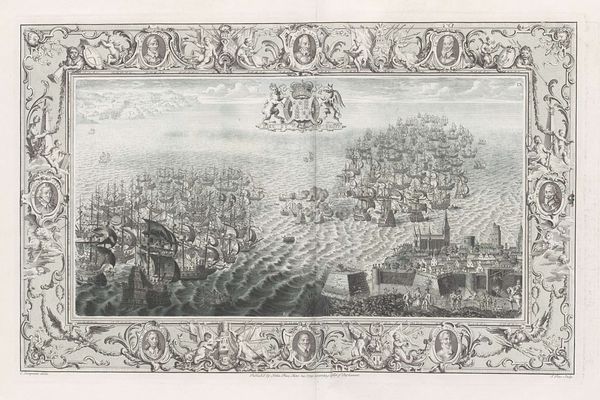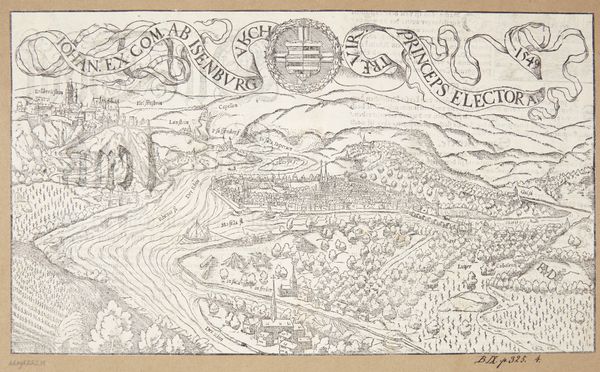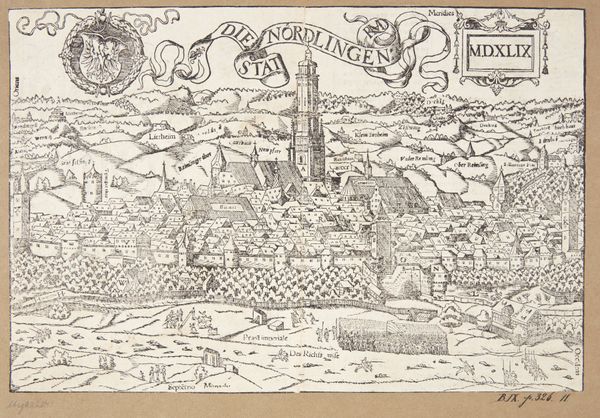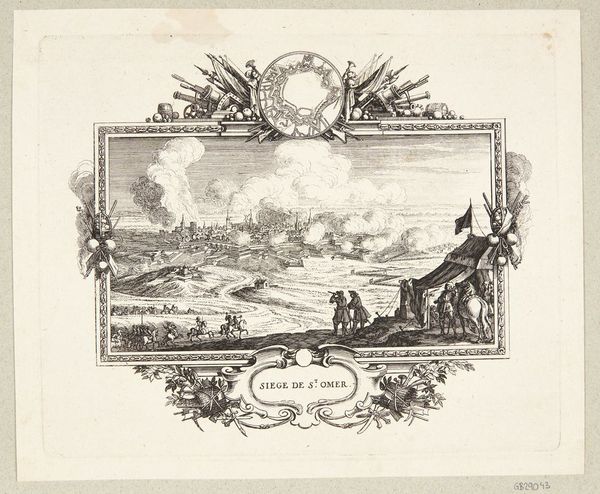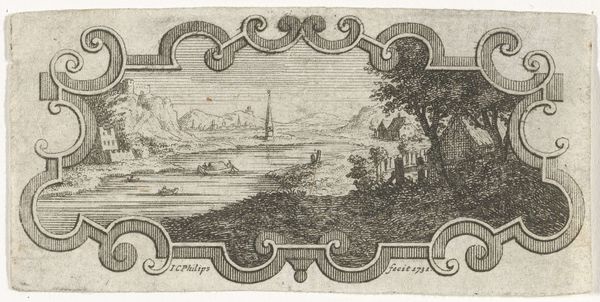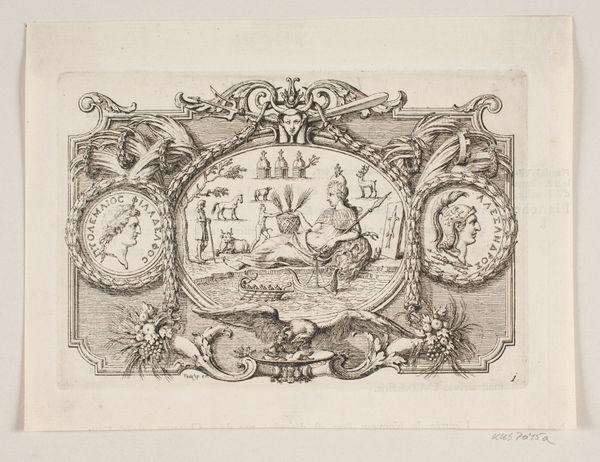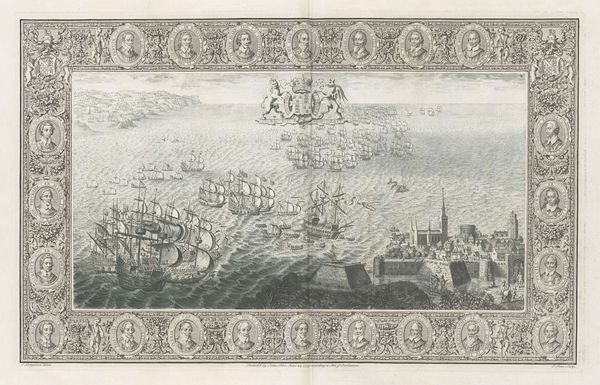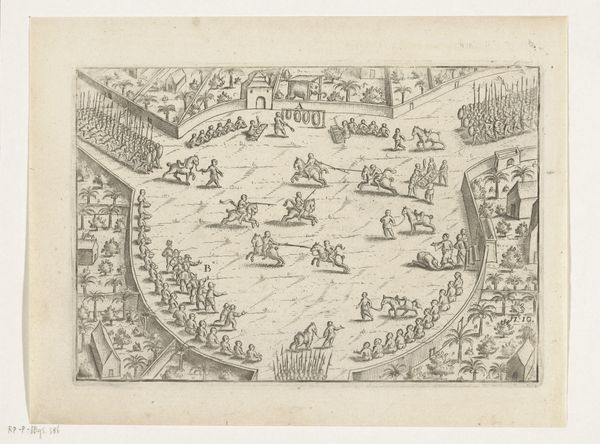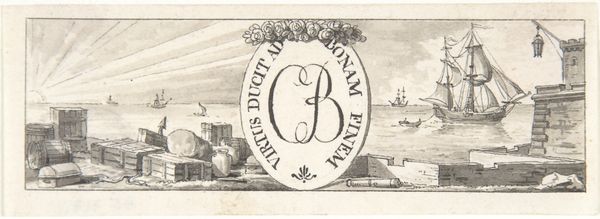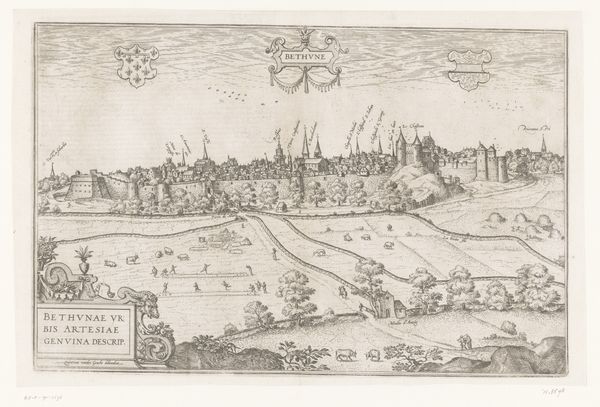
print, woodcut
#
medieval
# print
#
landscape
#
woodcut
#
pen work
#
cityscape
Dimensions: 192 mm (height) x 360 mm (width) (bladmaal)
Editor: Here we have Hans Rudolf Manuel Deutsch's "Kort over Freiburg im Breisgau," created in 1549. It's a woodcut print and it’s remarkably detailed. I'm struck by how the artist captures both the layout of the city and the surrounding landscape with such precision, even rendering vineyards in the foreground. How do you read the composition of this piece? Curator: The composition strikes me as carefully structured, utilizing line and form to create depth and spatial relationships. Consider how the artist employs linear perspective, not entirely accurate perhaps, but effective in guiding the eye from the detailed foreground of vineyards towards the intricate cityscape and finally to the mountainous backdrop. Do you observe the function of the banners and text at the top of the work? Editor: They seem almost like another layer, framing the image and adding a decorative quality, but how do they contribute to the overall structure? Curator: Exactly. The banners and text, with their swirling forms, act as a visual counterpoint to the orthogonal lines of the buildings and the cultivated fields. It's a fascinating interplay of organic and geometric shapes. Furthermore, consider the function of the light and shadow; do you observe it functioning naturalistically or structurally? Editor: It seems more structural. The artist isn't concerned with creating realistic lighting but instead uses contrasting lines to define shapes and textures. This enhances the legibility of the various elements in the cityscape. So, you see it as less about representation and more about the arrangement of forms. Curator: Precisely. While the image functions as a map, its artistic merit lies in its carefully orchestrated composition, which emphasizes the relationship between line, form, and space. Through rigorous formal analysis, we begin to appreciate the inherent visual complexities of Deutsch's work. Editor: I see it now; analyzing the lines, shapes and how they relate helps to break down the piece into what the artist was trying to emphasize through a strategic composition. Thank you. Curator: Indeed. And by understanding this, we move beyond simply recognizing what is depicted and begin to understand how the artist manipulates visual language.
Comments
No comments
Be the first to comment and join the conversation on the ultimate creative platform.
